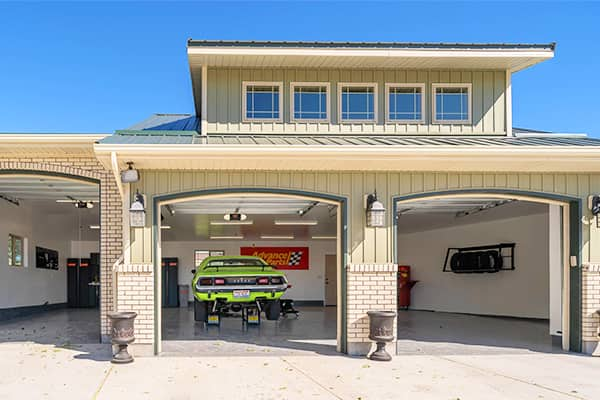
Source | Getty
Even for people who live in a region that normally sees a lot of snow and rough driving conditions, winter driving isn't much fun. It's demanding and stressful at best and downright treacherous at worst. Still, there are plenty of things you can do to up your chances of you and your car coming through the winter unscathed.
Things like traction control, anti-lock brakes, 4WD or all-wheel-drive, and vehicle stability control have been game changers when it comes to driving in snowy or icy conditions. Still, don't let these innovations lull you into a false sense of security — you still need to change your driving habits for snowy or slick conditions.
Make Sure Your Car's Ready

Source | Patrick Daxenbichler
It doesn't take a genius to know that your car's condition is vital to safe winter driving. Tires are literally "where the rubber meets the road," so that's a good place to start. All-season tires are okay if there's less than a half-inch of snow on the road, but they're not very effective in deep snow, and are pretty much worthless on ice or slush.
Winter tires, on the other hand, have come a long way from the heavy, clunky, noisy "mud grips" that were on your dad's 70s Buick wagon. Today's winter tires rival the best all-season tires in terms of noise, handling and ride quality, but they far surpass them in winter traction. Winter tires are made from a rubber formulation that's designed to stay supple and flexible in sub-freezing temperatures where all-season tires would become hard and rigid, ruining their traction. They're also designed with specialized tread patterns that enhance winter traction by channeling slush away from the tire's contact patch to prevent hydroplaning.
Many also feature a network of sipes, hundreds of tiny hair-width slits in the tread surface that optimize the tread surface area and provide more "bite" into snow and slush. Some winter tires are also pre-drilled so that studs can be installed by a tire shop (studs are much less damaging to roads than tire chains). The one thing to remember about winter tires, however, is that their softer rubber compound will wear quickly in warmer weather. Remember to change back to all-season tires when temperatures are above 40 degrees F.
Along with tires, you should think about:
- Windshield wipers
- Cooling system and coolant level (important for your car's heater and defroster)
- Windshield washer fluid
- Headlights
- Emergency kit
Be Aware Of Your Driving Habits
You'll have to alter the way you drive to be safe on snow and ice, starting with your speed. Your car is slower to react to braking or steering inputs on slick or snowy pavement, so just allow more time to get where you're going, slow down and give the car in front of you more distance.
-
Remember that a vehicle's weight effectively transfers with acceleration, braking and cornering. That means that as you accelerate, the front wheels have less traction and as you brake, the rear end has less traction. Make sure that your acceleration is gradual (also helping to prevent wheelspin) and your cornering or steering inputs are as well.
-
Oversteer is what happens when the rear end "fishtails" and skews out to one side during a turn. If you find yourself in an oversteering situation, turn the front wheels in the direction of the skid, let off the accelerator and don't brake. Oversteer is common with rear-wheel-drive vehicles (since the rear wheels are the drive wheels), while understeer happens with front-wheel-drive.
-
Understeer is when the front end "plows" forward as you try to negotiate a turn, putting your vehicle outside the desired direction of the turn. To prevent an understeering situation, slow down more than usual to enter the turn and don't use your brakes in mid-turn.
-
Try to remember to keep your hands at three o'clock and nine o'clock on the steering wheel for the best control and ability to react in case things get dicey. Use small steering corrections and movements to negotiate a turn.
-
Go easy on the brakes to avoid locking the wheels and skidding. Don't pump the brakes — it decreases the effectiveness of your ABS system.
-
Remove all the ice and snow from your vehicle (including the roof) before you start driving. A flying chunk of snow or ice from your vehicle can be disastrous for a driver behind you — and it's the law.
-
Try to avoid driving when you're tired and fatigued. Your reaction times will slow with fatigue, and you need to be on your game in bad weather.
Be Prepared
You hope that nothing bad (i.e., getting stranded) happens while you're out in winter conditions, but it's best to be ready if things do get ugly. Depending on how much room you have to spare in your vehicle, your trouble bag should include:
- Warm cap, sweater and gloves
- Cell phone power bank
- Kitty litter for traction in case you get stuck
- Flashlight
- High-protein snacks
- Scraper and brush for ice and snow
- Flasher, flares or safety triangle for emergencies
Don't let winter driving get the better of you. With the right mindset, the right knowledge and a well-equipped, well-maintained vehicle, you can be ready for the worst winter can throw at you.
How do you handle winter driving? Let us know in the comments.








